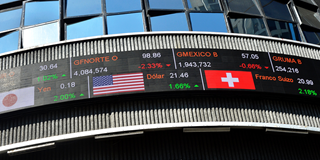There is no denying that flexible exchange rates provide valuable monetary-policy independence. But, in a dollar-dominated global trade environment, the ability of a floating currency regime to support full employment is severely limited.
CAMBRIDGE – In 1953, Milton Friedman published an essay called “The Case for Flexible Exchange Rates,” arguing that they cushion an economy from internal and external shocks by bringing about just the right price changes required to keep the economy at full employment. But after almost half-a-century of floating exchange rates, the reality is more complicated than that.

CAMBRIDGE – In 1953, Milton Friedman published an essay called “The Case for Flexible Exchange Rates,” arguing that they cushion an economy from internal and external shocks by bringing about just the right price changes required to keep the economy at full employment. But after almost half-a-century of floating exchange rates, the reality is more complicated than that.